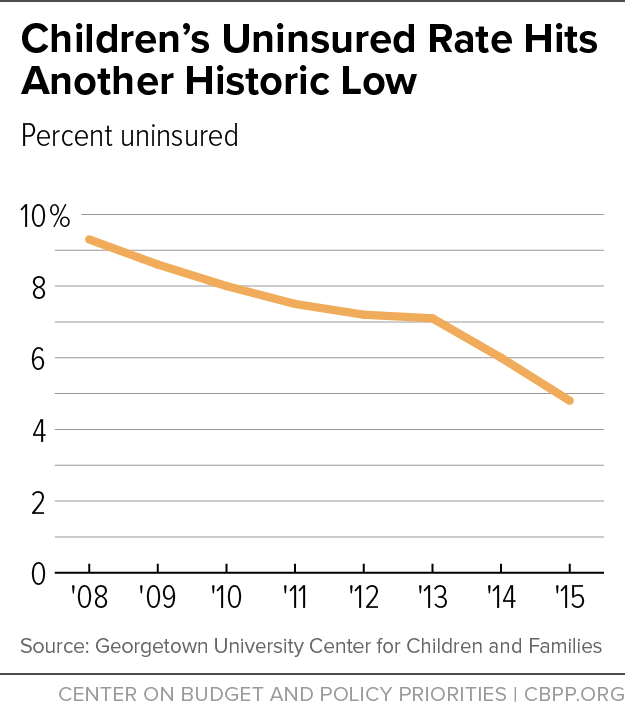BEYOND THE NUMBERS
The nation’s uninsured rate among children fell by a third (from 7.1 percent to 4.8 percent) from 2013 to 2015 as health reform’s major coverage provisions took effect, Georgetown University’s Center for Children and Families’ annual report on children’s health coverage finds (see chart). That’s the largest two-year drop in the uninsured rate among children on record, driven by continued enrollment growth in Medicaid and the Children’s Health Insurance Program (CHIP) and further coverage gains spurred by health reform.
Forty states and the District of Columbia experienced gains in children’s coverage between 2013 and 2015, and the improvements were widespread across race, ethnicity, income, and age, the report finds. (Wyoming is the one state in which the uninsured rate increased; the other nine states saw no statistically significant change.)
Federal and state policymakers can take further steps to ensure the nation continues to make progress in covering more uninsured children. For example:
- More states should adopt health reform’s Medicaid expansion. About two-thirds of uninsured children are eligible for, but unenrolled in, Medicaid and CHIP. And expanding Medicaid coverage to parents boosts participation by their children who are already eligible for Medicaid and CHIP, research shows. That’s important because nearly half of the remaining uninsured children live in the South, the Georgetown report notes, and most southern states still haven’t adopted the expansion.
- Extend federal CHIP funding. CHIP and Medicaid together have driven most of the kids’ coverage gains since CHIP was created in 1997. Unless the President and Congress act, however, there won’t be any new federal funding available for state CHIP programs after the end of fiscal year 2017. Policymakers should extend CHIP funding and ensure states have the funding and tools they need to sustain and expand their CHIP programs, while avoiding changes that would likely make it harder for eligible children to enroll or restrict access to needed care. They should extend CHIP funding early in 2017 to give state legislatures certainty as they craft their budgets.

